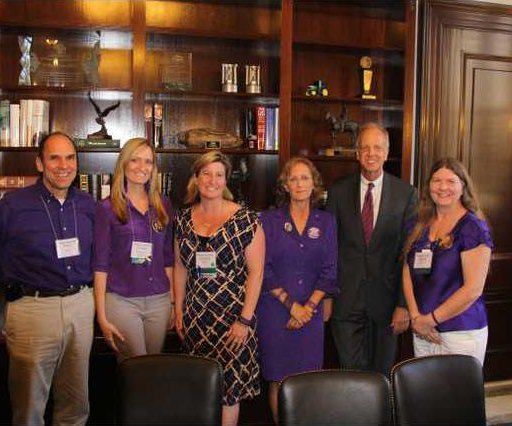Children should be protected from UV radiation, optometrists warn
Children, who typically spend more time outdoors in the sunlight than adults, are particularly susceptible to eye damage from ultraviolet radiation, and steps should be taken to protect young eyes, according to the Eye Care Council.
"Damage from the sun can build up cumulatively and may increase the risk of eye disorders later in life," said Dr. Julie Toon, a Wichita optometrist and president of the Eye Care Council. "The smartest thing parents can do is protect young eyes during outdoor time by making sure children wear a brimmed hat or cap and sunglasses that block UV radiation."
Susceptibility to UV radiation grows in the summer time, since radiation can reach eyes not only from the sky but also by reflection from the ground, especially water, sand and other bright surfaces. UV radiation risk is particularly high on the beach and while boating.
Toon added that while children are susceptible, no one at any age is immune to sunlight-related eye disorders.
"Overexposure to UV rays also can lead to cataracts, macular degeneration, or, in some cases, skin cancer around the eyelids," Toon said.
Laboratory studies show UV radiation is a causal factor for cataracts, and epidemiological studies show that certain types of cataracts are associated with a history of higher exposure to UV and especially UV-B radiation. Cataracts, a cloudiness of the lens inside the eye, are a major cause of visual impairment and blindness worldwide.
Toon added: "Other disorders that can occur are abnormal growths on the eye’s surface and even sunburn of the eyes. Symptoms include blurred vision, irritation, redness and excessive watering."
Sunlight is commonly divided into two components, UV-B and UV-A, neither of which benefits eyes or contributes to vision. Optimal sun protection should screen out both forms by simple, safe, and inexpensive methods such as wearing a brimmed hat and UV-blocking eyewear, particularly if such eyewear has a wraparound design to limit the entry of peripheral rays.
UV absorption can be incorporated into nearly all types of eyewear, including prescription spectacles, contact lenses and intraocular lens implants. UV protection is inexpensive and does not interfere with vision. However, polarization or photosensitive darkening are additional sunglass features that are useful for certain visual situations, but do not, by themselves, provide UV protection.
Public notice of the threat of UV radiation is part of the Eye Care Council’s emphasis on protecting the eyesight of children, Toon said. Another part is the SEE TO LEARN® program, which encourages parents to take advantage of a vision assessment, at no charge, for 3-year-old children.
This highly popular program is called SEE TO LEARN®, and optometrists have provided vision assessments without charge to more than 50,000 children since the program was created more than a decade ago. Participating Kansas eye doctors are listed at www.seetolearn.com <http://www.seetolearn.com>.
The Eye Care Council is a special vision health information resource created to educate the public about vision and appropriate eye care. Participating optometrists contribute time, money and professional advice to help people see more clearly, longer. For more information, please consult an Eye Care Council optometrist, call the Council at 800-960-EYES or visit the Council’s website, www.seetolearn.com <http://www.seetolearn.com>.





